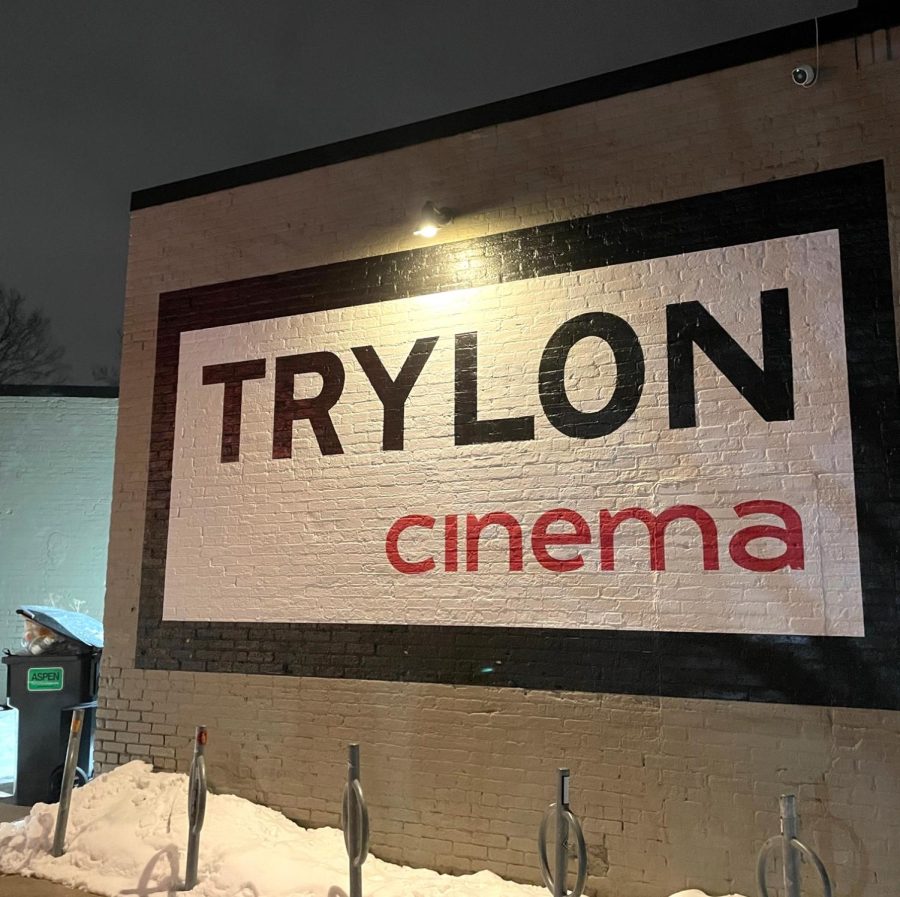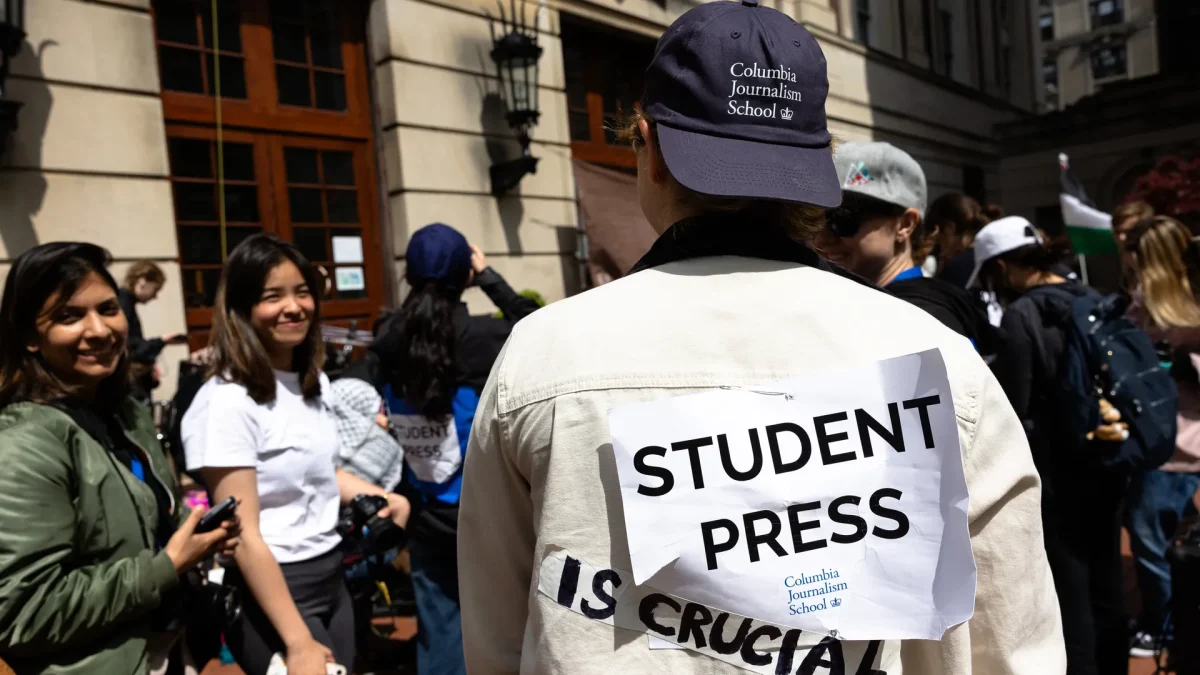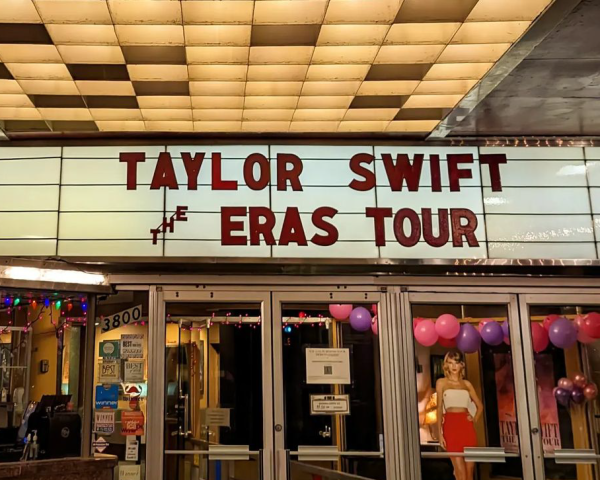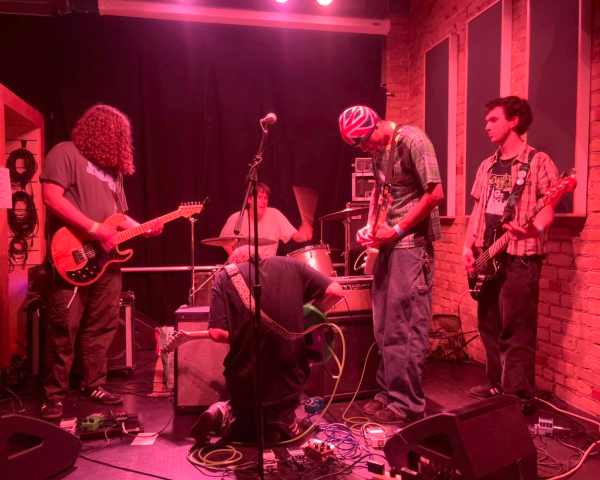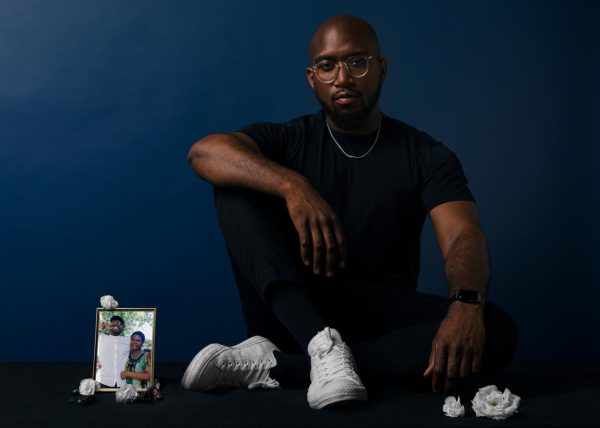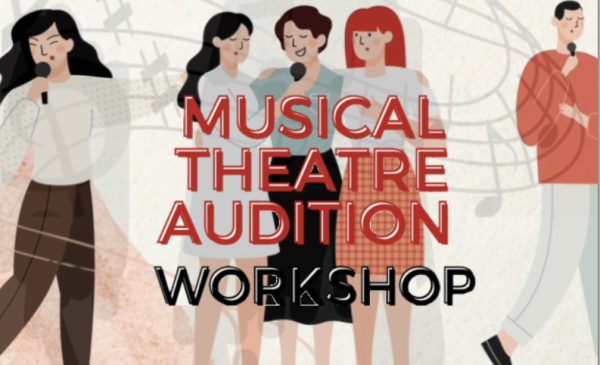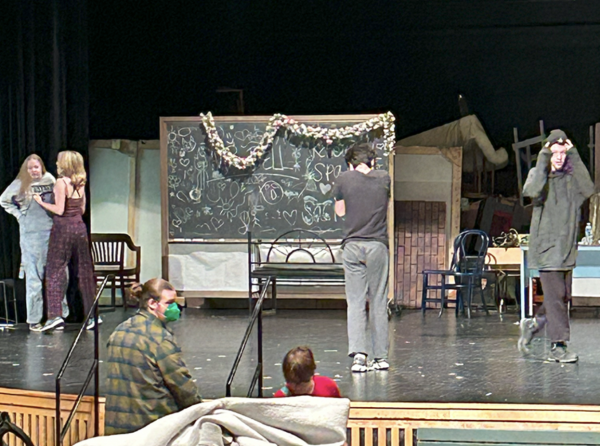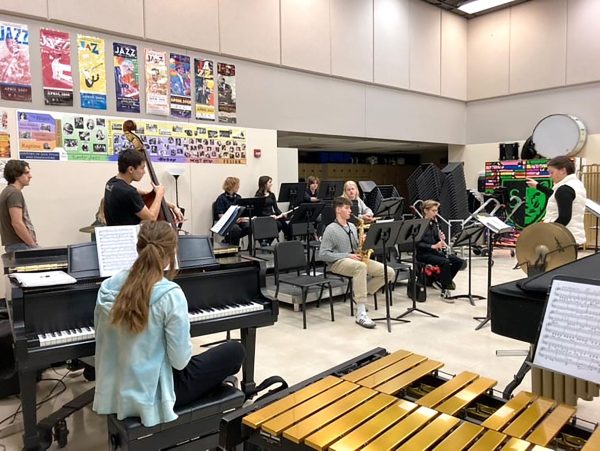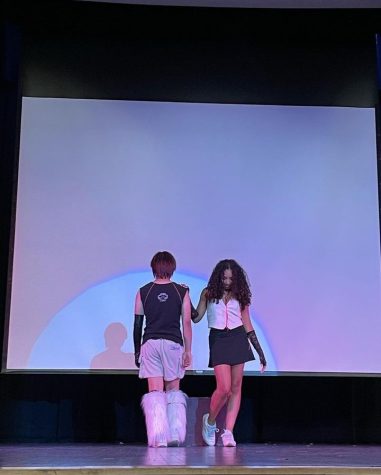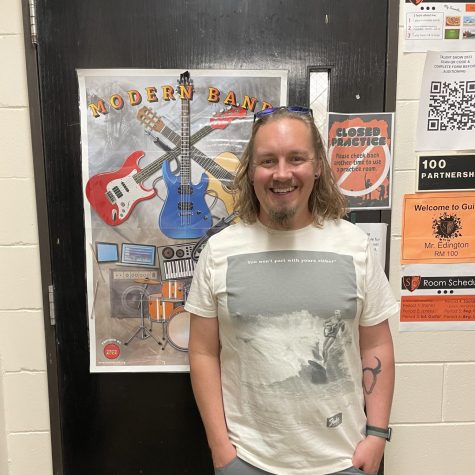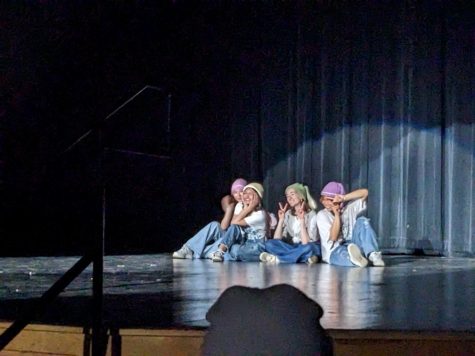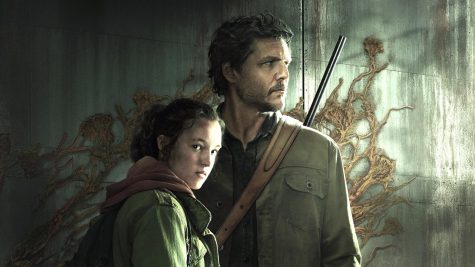The Trylon Cinema and the importance of repertory theaters
Mural outside the Trylon Cinema, a repertory theater on Minnehaha Avenue and 33rd Street, a mere 15 minute walk from South.
March 3, 2023
When someone tells you they’re going to see a movie, you probably imagine something like a suburban AMC: a dozen screens, expensive concessions, and IMAX. Or maybe something like the Riverview Theater: first and second run movies, one big screen, comfortable lobby, and a more nostalgic aesthetic. The Trylon Cinema, located right on Minnehaha and 33rd (a mere 15 minute walk from South), is neither of those. Seating about 90 people, the Trylon is a completely nonprofit, repertory only theater, often showing films on 16mm and 35mm prints. It’s an admittedly small space, situated behind Wildflyer Coffee in an old warehouse, almost feeling like a hidden gem, despite its routine of selling out high profile showings.
Everyone involved has a passion for film and film exhibition, which is shown entirely by the atmosphere. They program series and films that range all the way from modern Sci-Fi classics to Taiwanese new Wave to silent Hollywood. They also present a range of continual series’ in collaboration with other arts/culture organizations in the Twin Cities, such as Sound Unseen and the Mizna Film Series (Southwest Asian/North African film programming). In addition, they also partner with other Twin Cities theaters like the Riverview and the Heights to show other special series, like the annual Hitchcock Festival. The Trylon exemplifies the importance of a theatrical experience and cultivates a close community of film-goers, something rarer in the age of streaming and constant distraction.
Originally founded as a “microcinema” in 2009, the Trylon only sat 50 people, before going through a big renovation in the summer of 2017. An entire new outdoor courtyard, lobby, and concession stand were built, it was made more wheelchair accessible, moved the entrance to 33rd street, and almost doubled the seating capacity. The result is a distinctly modern, yet unique and movie-loving, space. “It was this weird place that was hard to find, this little tiny hole in the ground,” says John Moret, the Trylon film programmer. “Bad sound, you were only about 8 feet from the screen. It was awesome. [And] it built a very loyal, very…non-traditional movie goer.” But at a certain point they decided they had to expand that audience. “Film prints are expensive to ship: we have fifty seats. We would have to sell out a film six times to pay for the print.” So, they expanded, and have continued to grow since. “Because everything was better, projection, sound, etc, we were able to have people come more often and continue to [think] this is a great space.”
Moret, who has been the official Trylon film programmer since 2014, talked a lot about the often complicated process of programming. The big idea is finding ways to bring older movies in an interesting way to the audience, with as many film prints as possible. “I’m always thinking about ways to show as many films as I can from different countries, different time periods, different genres…because I think the philosophy of the Trylon has really become a sense of ‘we love cinema in all of its forms.’ There’s not one way we want to think about movies.” When he starts building a program it usually begins with an idea around one movie. Then he’ll connect that movie with filmmakers, actors, genres, or movements to create the series. “It gets to a point where you have to find ways to show it. Which either means you’re looking for a new restoration of a film, a 35mm or 16mm print of a film. [We’re] finding a way to put it on screen…so we’re proud of how it looks on screen.” Sometimes this process can be very quick, or it can take years, depending on how easily accessible the films are. Moret describes his job as “…choosing [the film], then finding it, how to do it.” The Trylon divides their calendar by seasons, announcing a full three months of scheduling a month in advance.
When talking about how the community of the Trylon has changed since the beginning of the pandemic, Moret observes how much younger the audience has become. Pre-pandemic they could show a classic Hollywood film and have 75 people there, with around half of them being over 60. “During the pandemic I feel like we lost a huge number of our older patrons.” He notes that people might not feel as safe because of the risk of sickness, but also remarks that the 2020 protests mere blocks away might’ve scared away a lot of the suburban audience. “Now it’s a little tougher to do the older films…I get it…those movies don’t work so well with a lot of younger audiences.” But there’s also a benefit to having a younger audience, hopefully building a sustainable audience that will continue to attend the Trylon for years. He connects this further to his goals as a programmer. “Programming-wise my goal is always to introduce audiences to new films. That’s what I love.”
On the topic of physical film exhibition, Moret says, “Part of it is reminding audiences that film used to not be perfect. Film used to be a performance. It used to be this thing where you had to physically put your hands on it and run it through a machine.” He notices how people who are 40 and younger tend to appreciate film prints on celluloid much more than older audiences who grew up with it and recognize the digital way as better and easier. “We’re all nostalgic for what we didn’t have.” To many, seeking out a film print seems like a novelty, but there is a certain special allure to seeing a movie in the “original” format, artifacts and all. “I’ve seen plenty of film prints, but there’s still something about them…there’s life to them that I don’t find digital has. I definitely don’t avoid digital screenings, I’m all for digital restoration, I just think that there’s something about film that’s special.”
While the current age of streaming has certainly had benefits to finding new and previously hard to find movies, it also has almost too many choices. “The problem with the amount of choices online is actually the amount of choices online,” Moret states. “There’s like a glut of too many things [to choose from]. As a casual movie watcher, how do you parse through all that?” It can be overwhelming, even for people who love movies. He believes that what the Trylon, and other repertory theaters around the country can do is curate things together to sort of create a watchlist that introduces you to different films. At the same time, those theaters put you in front of a movie and allows you to focus in a different way. “There’s [almost] no place in our culture anymore where you get to escape, unless it’s a movie theater…someone will yell at you for being on your phone.” It’s the only place where you can truly give all of your attention to a movie. A lot of people, pretty fairly, question why would you see a movie in a theater if it’s easily accessible at home? “There is a part of going out and being in public…that imprints on you in a different way…especially if it’s on film.” When you see a movie on film, the print is actively dying, so whenever it’s shown it’s a little different. “As it bumps through that projector…it’s taking off emulsion, it’s taking off color, it’s scratching the film print. Every time you see it it’s different and every time it’s temporary. There’s nothing permanent about film. The digital way we screen it will always be the same.”
Another thing that makes the movie-going experience, especially with physical film, so notable is the darkness of the theater. “There’s 24 frames per second that go through the projector. Everytime the film changes on the aperture plate, there’s a shutter that goes by, and that shutter puts you in complete darkness,” explains Moret. Even though this darkness lasts for a mere instant, it’s been proven that that darkness helps relax your brain. “A digital image that’s coming off of a screen and not projected from behind you…exhausts your brain in totally different ways.” This is part of what makes the Trylon such a unique place.
With a deluge of streaming content and seemingly infinite access to film, the Trylon Cinema provides that distraction-free and movie loving space that is so special. Even while big theater chains seem to be losing more and more business, and presenting at lower and lower quality, the Trylon’s model of simply loving cinema in all its forms has led it to flourish. While showcasing plenty of esoteric and hard-to-find films, the Trylon is open to people of all ages and varying experiences with film. Theaters like the Trylon are incredibly necessary for the cultivation of the film community in Minneapolis as well as promotion of film as an artful experience.

